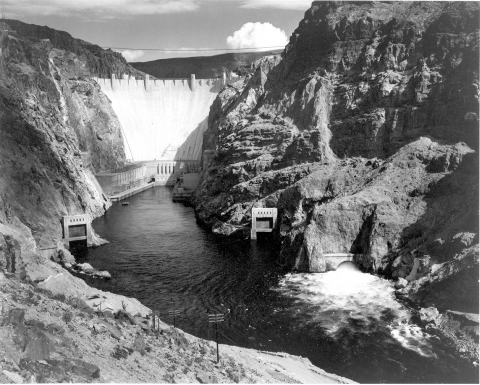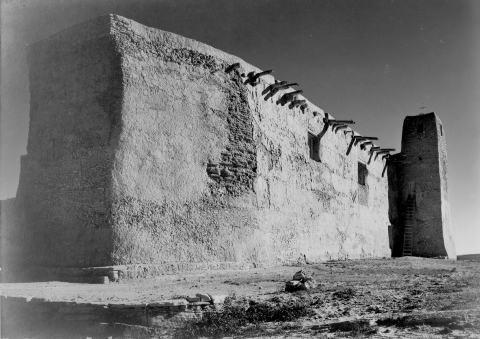Americans venerate the work of Ansel Adams but tend to get overexposed to the usual Adams prints in dentists’ waiting rooms, corporate offices, and other anesthetic spaces. At least that’s been my experience. It’s easy to forget how much Adams’ work vitally defined the 20th century perception of the American West, as much as Frederic Remington’s defined that of the 19th.
Wednesday, in honor of what would have been Adams 111th birthday, we posted a fascinating 1958 documentary to reintroduce you to the Adams you may have thought you knew—“musician, mountaineer, writer, teacher, photographer.” In the midst of rediscovering Adams ourselves, we stumbled upon an incredible trove of images at the National Archives—226, to be exact—taken at the behest of the National Park Service in 1941.
The purpose was to create a photo mural for the Department of the Interior Building in Washington, DC with the theme “nature as exemplified and protected in the U.S. National Parks.” While WWII put a stop to the project, the photo archive Adams left behind still makes an excellent case for the federal preservation of these landscapes (or what’s left of them today). This is the kind of propaganda I can get behind.
The image above is 79-AAB‑1 in the archive, or more prosaically, “Boulder Dam, 1941.” Adams photographed grand land- and desertscapes all over the West and Southwest, including the Grand Canyon, Mesa Verde, Death Valley, Yellowstone, Yosemite, Carlsbad Caverns, and land belonging to Navajo and Pueblo Indians—such as image #79-AAA‑6 (below), or “Church, Acoma Pueblo,” taken in Acoma Pueblo, New Mexico.
Like most of Adams’ work, these images are monumentally breathtaking in all their high-contrast vastness. Most of them are signed or captioned by Adams. You can browse the archives, view all of the photos, and order prints through the National Archives website.
Related Content:
Extreme Photography: Shooting Big Climbs at Yosemite
Alfred Stieglitz: The Eloquent Eye, a Revealing Look at “The Father of Modern Photography”
Josh Jones is a writer, editor, and musician based in Washington, DC. Follow him @jdmagness




The “prosaically named” Boulder Dam has had a checkered past. The first site proposed was at Boulder Canyon, hence the name was the Boulder Dam project. But its location was then moved 10 miles downstream to increase capacity. On its dedication day in 1931, it was referred to by President Hoover’s Secretary of the Interior as the Hoover Dam. After the election in 1932, President Roosevelt’s Secretary of the Interior objected and so in 1933 it was renamed the Boulder Dam. Finally in 1947, congress and President Truman named it the Hoover Dam.
You won’t find any of Ansel’s “Mona Lisas“in these images; the ones we know so well from his exhibitions and books. Ansel made a living as a commercial photographer and this project was a commercial assignment. As someone who worked for him, he often told us students and assistants that his commercial assignments taught him how to solve many photographic problems that later prepared him to make some of his great images. He called his commercial work “External Assignments” and his personal fine art photography his “Internal Assignments.”